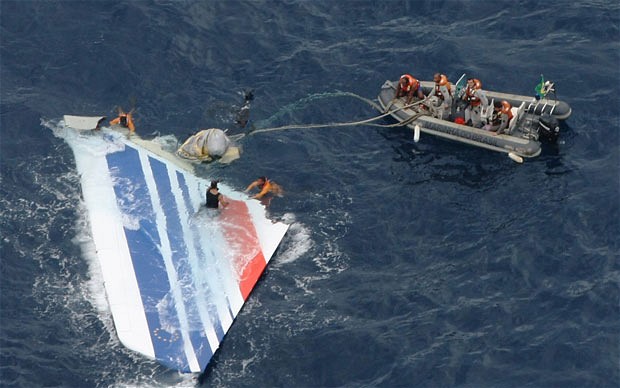 I have been long fascinated by and worried by the pitching into the ocean of Air France flight 447 bound from Rio de Janeiro, Brazil to Paris, France in June, 2009.
I have been long fascinated by and worried by the pitching into the ocean of Air France flight 447 bound from Rio de Janeiro, Brazil to Paris, France in June, 2009.
While it was in the middle of a tropical storm, it fell from the sky. This state of the art four year old A330 was piloted by a very experienced flight crew and belonged to an airline that is meticulous about maintenance. It should not have come down. For the families of those on board, answers were needed to explain the tragic loss of 228 lives (216 passengers and 12 crew).
02:13:40 (Deputy Captain David Robert) “Climb… climb… climb… climb…”
02:13:40 (First Officer Pierre-Cédric Bonin) “But I’ve had the stick back the whole time!”
02:13:42 (Captain Dubois) “No, no, no… Don’t climb… no, no.”
02:13:43 (Robert) “Descend… Give me the controls… Give me the controls!”
Hazard warning sounds: surface of the sea is fast approaching
02:14:23 (Robert) “Damn it, we’re going to crash… This can’t be happening!”
02:14:25 (Bonin) “But what’s going on?”
The captain, now acutely aware of the aircraft’s pitch, has the final word:
02:14:27 (Dubois) “Ten degrees of pitch…”
The plane ended up in water so deep that it took two years to locate the black boxes hence why it has taken three years for the crash report to be published. Only 44 of the deceased were recovered.
The report states that the accident resulted from a succession of events:
- the captain’s decision to leave the cockpit for a routine rest period while the flight was crossing an area renowned for major, high-altitude storms.
- the handing over of controls to the most inexperienced pilot
- temporary inconsistency between the airspeed measurements, probably following failure of the plane’s pitot (pronounced pea-toe) tubes – the small, forward-facing ducts that use airflow to measure aircraft airspeed. In the storm, these had apparently frozen over, blanking airspeed indicators and
- causing the autopilot to disengage
- from then on the crew failed to maintain sufficient speed which led to a stall; Bonin’s decision had been to pull back on the control stick. causing the plane to climb despite a stall warning that repeated itself 75 times. Instead of moving the stick forward to pick up speed, he continued to climb -at almost the maximum rate. If the officer had simply set the control to neutral or re-engaged the autopilot, all would have been well.
- and pilot misunderstanding of the situation: “The crew never realized that the plane had stalled,” chief investigator Alain Bouillard stated. For example, when the stall warnings sounded the pilots made no verbal acknowledgement of them, nor did they apply the stall recovery control inputs. If they had, the crash would not have been possible
- enhanced pilot training so pilots are fully aware of high-altitude handling characteristics of aircraft.
- training for closer cooperation between pilots in emergency situations
- design changes to improve stall-warning systems on some Airbus models
- improving incident reports written by flight crews and the way they are distributed, particularly to manufacturers.
- improved cockpit instrumentation
- better search-and-rescue procedures
- stepped-up government oversight of Air France’s safety systems
Related Links
BEA Second interim report 17 December 2009
BEA English version, Third interim report (including CVR transcripts) 30 July 2011



[…] “Damn it, we’re going to crash” AF 447 […]